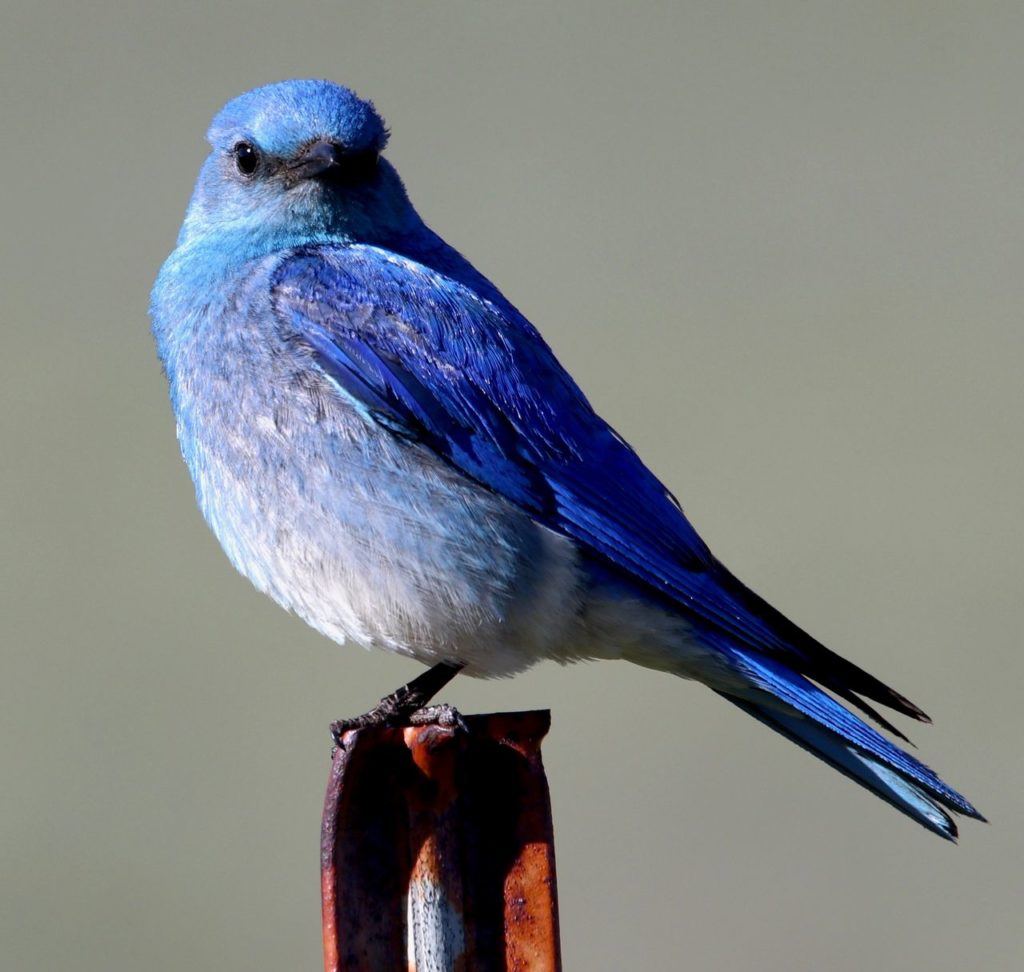By Deb Drain
As I was walking near our home in Island Park (IP) I heard the unmistakable sound of Mountain Bluebird (MOBL) adults and their fledglings calling to each other with their soft, low, non-musical “tew” or “peu”. It was wonderful to hear and see one of nature’s crown jewels tending their next generation.

MOBLs are easily spotted and identified by the male’s brilliant sky/turquoise blue. Unlike other species, the brilliant color of a MOBL is not due to pigment, but a trick of light caused by the structure of their feathers. Unlike the male, the females and juveniles are a grayish tan with blue on the wings and tail. MOBLs range across Western North America and during nesting season are found as far north as central and eastern AK. MOBLs are early arrivals to their breeding territories. Males start arriving in IP in mid Mar. Females start arriving early- to mid-Apr. The early arrival time provides an advantage over other bird species for the selection of the best nesting locations, which is important as the female MOBL selects her mate solely on the location and quality of the nesting site he’s selected. They nest throughout the IP area in lowland, foothill, or mountainous areas where open woodland or edge habitat provides nesting sites and cover with access to exposed perches and fairly sparse ground cover for foraging. They also nest in areas that have burned. MOBLs are secondary cavity nesters using abandoned woodpecker holes. They will readily use nest boxes, and in our neighborhood they even nest in an unused newspaper box. MOBLs typically nest twice during breeding season. The female MOBL constructs the nest, and lays, on average, 4-5 eggs that she incubates for 13-14 days. During this time the male provides food for the female. After the eggs hatch, both parents actively care for the chicks. Fledging occurs 18-23 days after egg hatch and the juveniles remain with the parents up to 28 days after they fledge. MOBLs are primarily insectivorous but also eat seeds and fruits. Diet depends on the local habitat, weather, and vegetation density. To get a sense of how many times the adults fed their chicks and what they were feeding them, I closely observed the MOBL nest on our property from 7AM 27 Jul thru 9AM 29 Jul 2016. Over 808 minutes of observation I documented 260 feedings, an average of one for every 3.1 mins, of which 150 were female and 110 were male feedings. I was able to photograph 139 of the 260 feedings, which included 2 ants, 2 small unidentified bugs, 1 green caterpillar, 74 grasshoppers, 57 moths, 1 snail, 1 spider, and 1 worm. Often I saw the adults with several insects in their beaks at one time. Over the course of the breeding season that adds up to a lot of energy expended to raise young, not to mention the number of insects consumed. In late summer MOBLs gather in large flocks and start to wander. Fall migration typically occurs Sept – Nov. Mountain Bluebirds over-winter in WA, CA, the SW US, and Mexico. It’s always a sad day when they depart for the year, but always a very good day when they return at winter’s end.
